Alexander Pokryshkin
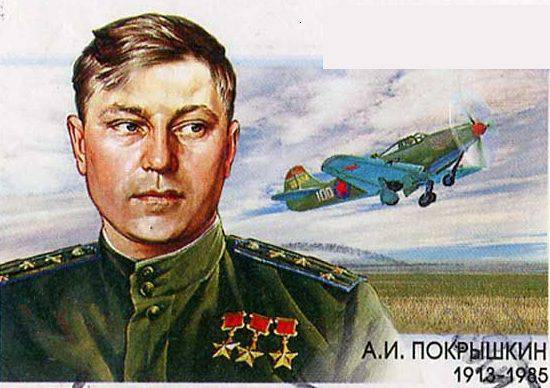
He was known and feared by the enemies. Already in 1943, the flight style of A.I. Pokryshkina became known to the Nazi air command. Hitler's observers on the ground and in the air warned their pilots: "Attention! Attention! In the sky Pokryshkin!" This panic warning was also the highest certification to our glorious pilot.
Among the names of combat pilots, the name Pokryshkin stands alone. The first three times Hero of the war, and so he was the only one until the end of the Great Patriotic War. He was the author of new tactical constructions and methods of air combat, an inflexible fighter against routine, a model of a fighter - skillful, violent and noble.
Nature is extremely stingy. With reluctance, she shows the world gifted people, and even less often - real geniuses. But what always distinguishes extraordinary people is that they invariably have a harder time in life, they are not comfortable for others in everything. The reason for this, most likely, is the nature of the person. Outstanding and aware of themselves as such, as a rule, people with character, and even with what! However, character in itself does not yet serve as a pass to the world historical personalities. It takes will to manifest it. The presence of both qualities in a person often makes him outstanding. This is exactly what Pokryshkin was. His temper and character were shaped by the time in which he lived - romantic, patriotic and difficult. They often said: Pokryshkin was lucky. But, is it really so.
He is from a folk, poor and large family. His father, Ivan Petrovich Pokryshkin, gave his surname to his sons and daughter in the town of Novonikolaevsk, Tomsk Province. The construction of new cities was associated with the arrival of many people from distant places. Came and Ivan Petrovich, without money. And he found shelter on the outskirts of Novonikolayevsk, which had just become a city. Poor people sheltered them, giving a little shack from the same room. Here is 6 March 1913, and Alexander Pokryshkin was born, becoming the second son after Vasily. A year later, my sister Maria was born, then the brothers Alexey, Peter, Valentin, Victor. Now it is difficult to imagine how this large family of 9 people was located and lived in one small room with three windows.
In 1928, Alexander graduated from a seven-year school and went to roofers. However, two years later, the profession changed: Pokryshkin entered the FZU College in Novosibirsk to study the specialty of a metalworker and healer. According to the Komsomol ticket he was sent to aviation School in 1932, but became a pilot just before the war, having successfully graduated from 3 military schools and having served as an aircraft technician for 4 years. In a word, it was necessary to go through a difficult, long and thorny path in 8 years, to write 39 military reports to commanders, the commander of the Air Force, and the narcotics of defense in order to graduate from a flight school and become a pilot. You cannot call luck luck ...
Pokryshkin's first military aviation school was Perm. While he was driving, the pilot training course was reduced. And the full name of this school was: "Perm Aviation-Technical School No. XXUMX". Alexander decided to pick up the documents and return home. But at the head of this educational institution the question was decided abruptly: either to stay in college and study for aviation, or to put a Komsomol card on the table. The first decision was taken: to become a military technician. He studied diligently, deeply studied aviation technology. In 3, he graduated perfectly. Then - Leningrad Aviation School of Theory (1933-1933 years). Pokryshkin learns, almost a round student. And the first stage of Alexander’s military biography begins: the service of a senior aviation engineer. On many reports the answers were negative: “Refuse”, “Refrain”.
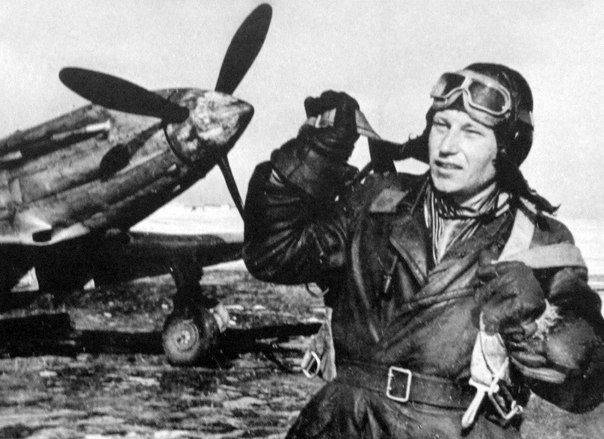
During the holidays, Pokryshkin turns to the head of the Krasnodar Aeroclub with an application for permission to pass exams with credits in theory and practice in the amount of a full two-year course. Seeing Pokryshkin in the officer's uniform - in chrome boots, blue riding breeches, a green tunic, with "cubes" in blue buttonholes, the head of the flying club was confused. This have not happened before. This was the first time. Pokryshkin insisted, the chief surrendered. For 17 days passed all exams, tests, practical flights with an instructor and carried out the first independent flight on Y-2 (By-2).
After that - the 40 report with a copy of the excellent certificate from the Krasnodar flying club. Now, the commander of the unit nevertheless sent Pokryshkin to the well-known Kachin aviation school. The pilot became in 1940 year and was sent to the fighter regiment in Moldova.
Alexander Ivanovich entered the mortal battle with the Nazis on the morning of 22 on June 1941 of the year. He ended the war on 9 in May of 1945. On this day, in 18 hours of 9 in May, 1945 of the year in the sky over Prague, led by Alexander Ivanovich - George Golubov - shot down the last Nazi aircraft. And it was the last Hitler aircraft destroyed in World War II. As well as the 1147 th aircraft, shot down by the Skryshkin division.
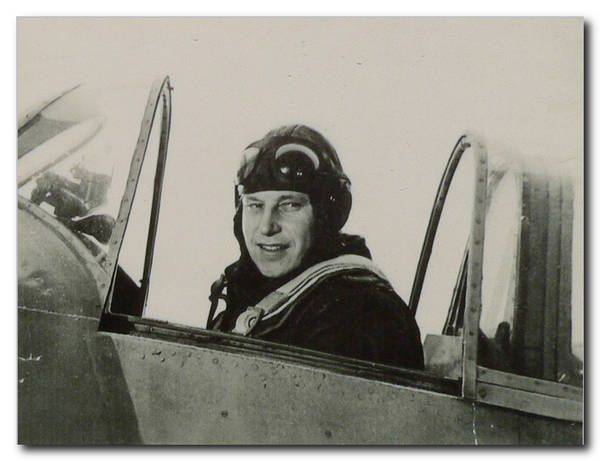
There are few heroes in world military history comparable to Pokryshkin. In aviation history there are even fewer of them. Only his personal confirmed air victories and combat results of the division are an unsurpassed achievement. Even in the Air Force, who experienced an incredible load, there are few pilots who have had as many successful air battles as Pokryshkin. He completed over 650 sorties. He twice went through a warring country from the western borders to the Caucasus and back with battles from the Caucasus to the western border, and then in the skies of Romania, Poland, Germany, Czechoslovakia. Pokryshkin did not have a single serious wound or contusion, after which they are in hospitals. But he constantly, throughout the war, looked death in the eye. He was shot down over the territory occupied by the enemy. However, he returned to the battle formation of squadrons, regiments, divisions and again conducted air battles.
He created his air combat tactics, introduced his fighting techniques, his basics of shooting when meeting with the enemy, his standards of fighter behavior, unlike those that were approved by the Commander-in-Chief of the Air Force and the People's Commissar of the country's defense before the war. This air tactics and combat techniques spread in all the Air Force, on all fronts.
With his roots, Pokryshkin’s “academy” goes back into his long-standing records, where he collected information about Nesterov and Krutyna, about battles in the skies of Spain and Khalkhin Gol, dismantled his findings and failures in parts. Why did Pokryshkin quickly prove that he is not just a technician, but a brave pilot? He was distinguished from others by excellent piloting and deep knowledge of the design of the fighter and its engine. The level of knowledge made him stand out among others, turned the young pilot into an instructor. In the future, he will be better than others to train and educate the newly arriving young recruits and will take the post of assistant regiment commander for air-infantry service.
His reference book was the memoirs of the distinguished pilot-ace of the First World War, R.P. Fonka "My air battles." It described in detail the tactics of air battles of the time. Fonk was a recognized ace and hit 75 airplanes. But Pokryshkin did not copy Fonk’s theory. He implemented the fundamentals of the combat use of Fonk, his combat maneuvers, managed to develop and improve in relation to the 40's fighters.
The knowledge of mechanics obtained in Perm and Leningrad allowed the pilot to solve tactical tasks. He was helped by excellent knowledge in mathematics, theoretical mechanics, physics. Based on them, he always sought to calculate his maneuvers and the actions of the enemy. With the help of his calculations, sketches and schemes, he could prove that a well-trained pilot on a bad fighter can successfully fight a less well-prepared enemy pilot on a better aircraft. Pokryshkin was the author of unexpected and rapid attacks. He helped him to create the theory of these attacks was the fighter pilot Sokolov - the same soldier in the first squadron, where he served as a Siberian. There appeared in his diary entry: "The key to victory - this is maneuver and fire!"
Not immediately successful skills in aerial shooting came to Pokryshkin. He needed hard training in shooting a towed cone in order to understand the reasons for the low shooting results. The trajectories, the rate of fire were again calculated, formulas, drawings and graphs were written. As a result - another entry in the diary: "Success depends on shooting from a short distance."
Next came the justification of the best position for striking the support. This is how the “academic” Pokryshkin's tent developed. She was nicknamed by his colleagues. It hung out the charts, diagrams, classes were held, debriefing. The tactics developed by Pokryshkin helped the Soviet ace to "take off" the straitjacket of horizontal maneuvers, which was prescribed by the Air Force guidelines.
During 1941-1942, pilots were retrained. New monoplane planes opened the era of vertical maneuver in fighter battles. Pokryshkin was a pioneer among the first to make a significant contribution to the development of a new tactic. So, in the sky of Kuban, the main formula of a successful air combat was developed: "Altitude, speed, maneuver, fire". On good planes prepared as Pokryshkin, fighter pilots were not afraid of any enemy in aerial combat. The notebook, called "Fighter tactics in battle", containing notes, sketches, sketches, calculations, became the basis of the Schwäck science win. This notebook was transferred to the Central Museum of the Armed Forces.
Already in the spring of 1943, the nazi warning posts, using agents, were tirelessly warned - the famous Soviet ace in the sky. It was prescribed - to increase caution, to get out of the air battle, the "hunters" to gain altitude, and inexperienced pilots immediately return to the airfields. Those who beat the ace, promised high awards. There were a lot of people willing to go on this feat. But it did not help. And it's not only in the outstanding skill of Alexander Ivanovich, it is worth recalling that in his aviation division there were such aces as Rechkalov and the Glinka brothers, Clubs and Babak, Fedorov and Fadeev. If such a group entered the battle, hoping to bring down the commander was simply naive.
In the Kuban began the second period of the combat biography of the Hero. Here his military talent revealed brightly, hence his name became known on all fronts, including abroad. The main thing that distinguished Pokryshkin from others was the use of new combat techniques during air battles, the use of elements of new tactics. But these combat techniques were not provided for by the pre-war manuals on the use of fighter aircraft in battle. And for this he received repeated reproaches, remarks, caused discontent among senior commanders and superiors. Sometimes it ended with more stringent measures, including the removal from office, not submitting to encouragement, reward or recall of materials with award sheets.
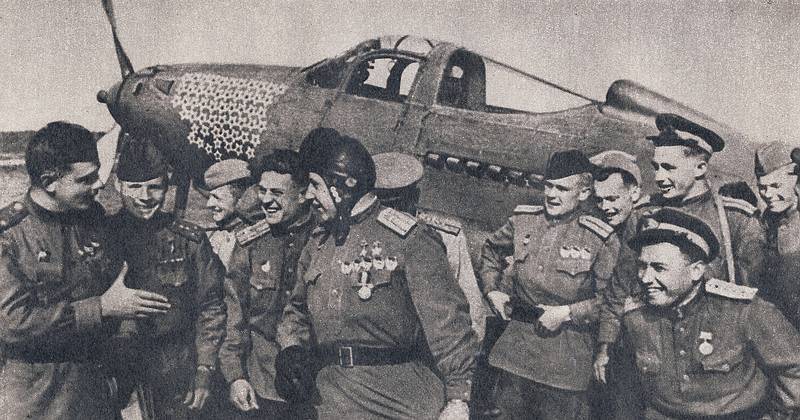
Commanders and commanders during the war, Pokryshkin had a lot. Among them are commanders of regiments, divisions, corps, commanders and front commanders. Among them is the commander of the 55-iap, lieutenant-colonel V.P. Ivanov and regiment commissar MA The cellar. This pair of managers remained in his memory forever - smart, business organizers and leaders. Among the commanders of the air armies were generals Naumenko, Vershinin, Khryukin, Krasovsky and Vershinin (in the post-war years he became Commander-in-Chief of the Air Force). All of them left their mark on the combat biography of Pokryshkin.
In the spring of 1943 of the year, rearming with the Aero Cobra, the regiment began combat operations from the airfield near Krasnodar. The air battle in the sky of Krasnodar was the most intense in the Great Patriotic War: over the month of 2 more than 800 of enemy aircraft were destroyed. 12 April Pokryshkin shot down four Me-109. Then Alexander Ivanovich destroyed three more enemy vehicles and brought the number of planes shot down in one day to seven.
Since August, the 1943-th 16-th Guards Iap has participated in battles over the waters of the Black Sea and the Dnieper. In the battles in Ukraine, Alexander Ivanovich destroyed 18 "Junkers" and "Messerschmitts." Among the most victorious and fierce air battles was the fight in the sky of the Great Tokmak. Famous ace with his follower G.G. Golubev carried out a "free hunt". Noticing the fascist vultures preparing for the bombing over the front line, Pokryshkin swiftly launched an attack, shot down one bomber, damaged two more and entered into a battle with cover aircraft. In the second combat mission as part of the four fighters, having found the Ju-88 group, Alexander Ivanovich letting her go to the rear, gained altitude and, turning from the sunny side, decisively attacked. On the wings of the bombers flashed yellow glare. So sometimes our red stars reflected. Pokryshkin, gave the order "do not shoot" and went ahead. However, seeing the crosses on the machines, he made a sharp half-loop with lightning speed and, finding himself behind the leading fascist group, gave a cannon-line through it. The last one exploded. Our cockpit's "Aecobra" flew through the center of a strong explosion, but remained intact. Neighboring Junkers caught fire from falling debris. Pokryshkin again performs the sharpest turn and attacks again. The enemy wants to be saved by a steep dive, but he is hit by a second Cobra attack. This famous battle was seen by hundreds of people, dozens of memories and pictures were written about it.
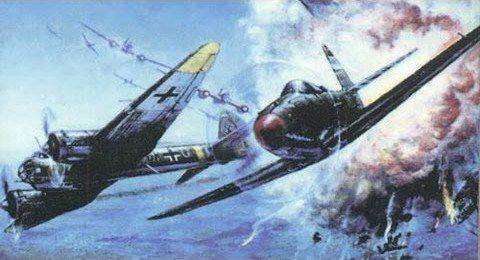
On the eve of the spring of 1944, Pokryshkin was offered a general's position in Moscow. In the office of the Commander-in-Chief of the Air Force, Alexander Ivanovich abandoned the post of the Moscow apartment: only the front, only to fight and shoot down enemy planes. Marshal agreed. Twice the Hero returned from Moscow to his division and continued the combat path.
19 September 1944 of the year, in the Kremlin, Pokryshkin was awarded the third Golden Star. The first and only three times Hero of the Soviet Union during the war became known to the whole world, on all continents.
In 1945, Alexander Ivanovich commanded a division in the course of the Vislo-Oder, Lower-Silesian, Upper Silesian, Berlin and Prague offensive operations. The division under his command received the honorary title "Berlin" and was awarded three orders. Pokryshkin himself was the last sortie executed on 30 on April 1945 of the year.
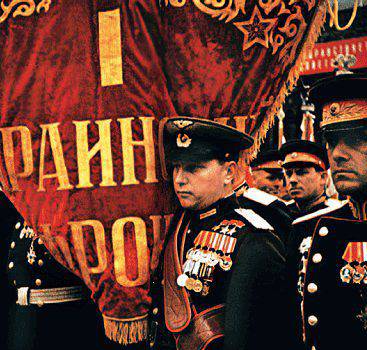
His exploits and military talent recognized 39 states of the world. In 1944, President Roosevelt officially declared Pokryshkin "the best fighter pilot of all the allied armies." He had to be in many dozens of countries. And in each accepted, met the first person. Each of them wanted to see, hear a person of world fame. He was awarded 19 awards from other countries. The first among them is the United States of America. Our fighter pilot was the first to receive the American high award back in 1943, when the war was in full swing. US Vice President Johnston showed keen interest in Pokryshkin and his family when in the fall of 1944 he returned from Moscow after meeting with Stalin and other USSR leaders in his country and stopped in Novosibirsk to meet with Pokryshkin’s relatives.
The peoples of many countries of Europe, Asia, Cuba, recognizing the talent of the Russian pilot, presented the highest awards to Alexander Ivanovich. Pokryshkin was awarded two orders of Romania, two - Poland, two - Mongolia, the awards of Germany, Czechoslovakia, Vietnam, France, Syria and other countries. Name of Air Marshal A.I. Pokryshkina is immortalized in the names of streets and squares, educational institutions, in monuments and memorial plaques of Moscow, Rzhev, Kaliningrad, Krasnodar, Novosibirsk, Novokuznetsk and other cities of Russia and the near abroad. His name is the minor planet, an island in the Far East, the Novosibirsk metro station.
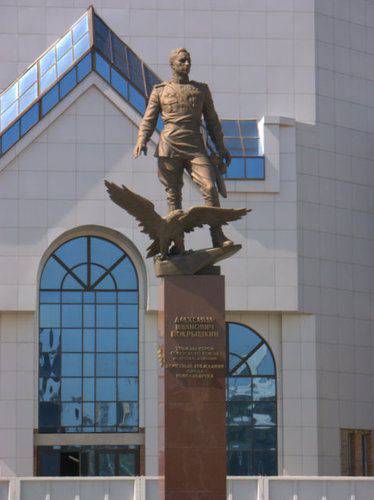
Sources:
Kozlov, M.M. World War II 1941 — 1945. M .: Soviet Encyclopedia, 1985. C. 567-573, 582-656.
Timofeev A.V. Alexander Pokryshkin. Great pilot of the great war. - M .: Yauza; Eksmo, 2009. C. 12-15, 128-133, 206-208.
Yuzhaninov L. Alexander Pokryshkin // Siberian lights. 2005. No.5 C.26-27.
Kaminsky P., Khazanov D. Not only speed, motors and guns // Aviamaster. 1997. No. 2. C. 14.
Ustinov Yu. The first three times hero // Wings of the Motherland. 2001. No.5. C. 29-31.
Demin A. “Laptezhniki” under the fire of the Soviet aces // Aviation and Cosmonautics. 2001. No.10. C. 36-37.
Documentary film "Alexander Pokryshkin". Directed by D. Demin. Creative Association "Screen". USSR State Radio and Television, 1985.
Information